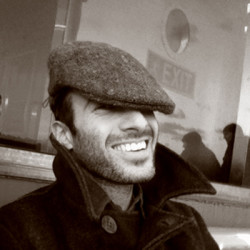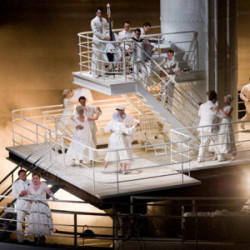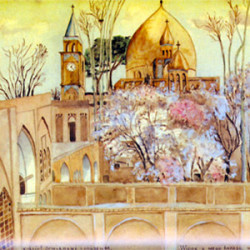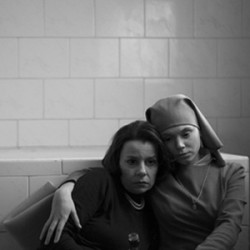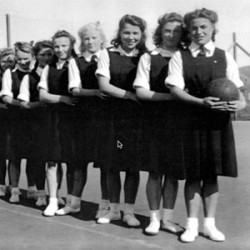2015 Vol. 7 No. 2 — Summer / Interviews
“When enemies agree to sit at the table, push away anger and desire for revenge, they find a way to compromise,” IPN historian Przemysław Gasztold-Seń tells Bobbie Traut. Democracy is always a work in progress, and Gasztold-Seń remains optimistic.
2015 Vol. 7 No. 2 — Summer / Bulletin Board
by CR × on June 6, 2015 at 2:00 am ×
A 3D map of the Tatra mountains wows; Krzysztof Kieslowski’s “Decalogue” to get an American remake; Aquila Polonica’s “Color of Courage” wins awards; and variant spellings are suddenly everywhere – including here.
2015 Vol. 7 No. 2 — Summer / Features
Traveling back in time again to 19th Century California where those expert tour guides, Lynn Ludlow and Maureen Mroczek Morris, take us to San Francisco’s lively gathering spot, the New York Casino. Owned by General Kris, the handsomest general in the Union Army, the Casino is known for its convivial spirit along with a steady flow of spirits. A regular patron is Rudolf Korwin Piotrowski who likes nothing more than philosophical discussions about the true nature of “Polishness” between visits to the generous – and free – offerings at the General’s table.
2015 Vol. 7 No. 2 — Summer / Books
by CR × on June 6, 2015 at 1:30 am ×
Meet a publisher who thinks more European writers should find a spot on American bookshelves. Ross Ufberg and New Vessel Press are rescuing lost literary voices, including that of Poland’s Marek Hłasko.
2015 Vol. 7 No. 2 — Summer / Features
Hard to trace the first encounter between Frederique Michel and Jan Kott, but their meeting and collaboration at City Garage eventually led to Polish Theatre Month in Los Angeles. Maria Pilatowicz tells the story.
2015 Vol. 7 No. 2 — Summer / Features
Where would you meet Studs Terkel, Zadie Smith and Małgorzata Pospiech; see John Cusack’s adaptation of “Fear and Loathing in Las Vegas” as well as Theatre Banialuka’s “Opowieść o chłopcu i wietrze;” in fact a non-stop stream of eclectic, daring, stimulating events? Megan Geigner leads the way to Chicago’s fabulous Chopin Theatre.
2015 Vol. 7 No. 1 — Spring
by CR × on February 24, 2015 at 6:20 pm ×
Join the conversation about the quiet little film that took the noise capital of the world by storm, and about a startling opera that was long suppressed. Check out Silicon Valley and then gaze in awe at the sight of Poland’s little koniks, the descendants of the ancient Tarpans, as they are once again released into the wild. As always, cosmoPoles are everywhere (even the horses!), with great stories everywhere.
2015 Vol. 7 No. 1 — Spring / Music
Mieczysław Weinberg’s opera, The Passenger, is not only a complicated work of art, but a complicated work of historical trauma. Magda Romanska reviews the work with a brilliant survey that covers the opera, the history, the novel by Zofia Posmysz, the film by Andrzej Munk, and the responses to the production.
2015 Vol. 7 No. 1 — Spring / Features
They received gifts of dates, nuts, roasted peas with raisins, and juicy pomegranates; visited museums, mosques and bazaars; and were always greeted with kindness. All this in what has often been called the most beautiful city in the world.
Features
Eavesdropping at a Palo Alto Café, you overhear common terms like “start-up” and “prototype” and “later-stage accelerator,” but all this is just plain shoptalk. There are, however, no specific terms to define the magic of Silicon Valley itself.
2015 Vol. 7 No. 1 — Spring / Films
It’s a black-and-white film about a Polish Catholic nun that America didn’t ridicule but fell in love with. Agnieszka Niezgoda asks three members of the Academy, “Why?”
Films
The ancient breed of horses, the Tarpans, were extinct but Polish scientists bred an almost perfect descendent, and called it konik. Today, the koniks have been reintroduced into the wild by an international team of scientists, documentary makers Jen Miller and Sophie Peregrum filmed them, and Justine Jablonska has the story.
2015 Vol. 7 No. 1 — Spring / Features
It is important to understand the welcome practices of host countries and their treatment of child refugees, and the long-term well-being and adaptation of both the children and their host countries. Amanda Chalupa takes a look at what is possibly the gold standard, set by the people of New Zealand.



